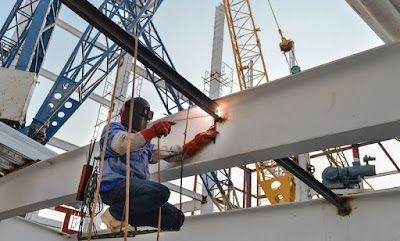
Structural steel fabrication is a complex process that needs specific knowledge, expertise, and resources to perform effectively. To build structural steel beams, elements, or equipment, a superb metal fabricator follows a particular process:
Ideation: This phase may be creative or standardize as per the needs of utilizing steel elements. Here the fabricator will make any structural steel products which you are searching for.
Blueprint: Drawing is completed via various software that engages in needs, code compliances, and requirements.
Turn Blueprints In Shop Drawings: To perform the processing of steel it will likely be transformed into shop drawings that will stick to logistics from the project such as deadlines and budget. A manufacturer utilizes the Structural Steel Shop Drawings to perform blueprint creation.
Drill Steel Beams: Within this method, the metal is burned to the shape we glance for. Here the fabricators cut down the steel by shearing, sawing, or chiseling with equipment such as laser cutters and water jets to cut and drill steel beams according to drawings. All the equipment is of a professional level that creates top quality results and quicker.
Piece Engraving: All the steel items will be customized with part number and plate location that morph it into a final assembled part on-site which is fast, simple, and appropriate. Steel is ductile naturally that may be bent or hammered to create its curved steel factors that are utilized by the architects within their design. This can be achieved manually or by using a machine.
Part Assemblage: Important section of the steel fabrication process. It is needed to connect fixtures and fittings to arrange connections for installation on location. Steel sections are assembled here to create complete buildings. After cutting and forming of steel elements are done, then the welding process starts to assemble it an entire structure. Once the assembling of parts is completed, it will be checked whether it fulfills the specification or not.
Part Machination: Fabricators produce customized parts that are perfect when you require parts to install a structure or product utilized in any project. It is required when the requirements or the sizes from the elements are not proper. Here the added steel is shaved away to make it into the preferred form. Equipment like Lathes, mills, and drills are utilized to process it.
Complete Assembly: On this phase, all the part or elements which were needed by the client is looked capabilities or not. If there was an error in most of the above steps than the modifications could take place.
Delivery Preparation: All of the assembled components are successfully loaded to create the project erection at the site easy.
Component Completing: When the steel is entirely assembled into a design that people were looking for it is then methods for utilizing the coating to protect it against rust and fire. All the components are created according to government rules and compliance codes.
Site Delivery: Final delivery of the components is completed here to the client. The job is then erected on the spot for building purposes.
Bottom line
Steel, when compared with other metal, is significantly cost-effective and offers huge efficiency throughout the steel supply chain by lessening the cost. With steel components, it has high strength and is achieved for long-lasting. Steel fabrication via different tools to create a final assembled structure which you can use by the designers in the development of the building.

View more here: Promec Engineering Pty Ltd


















